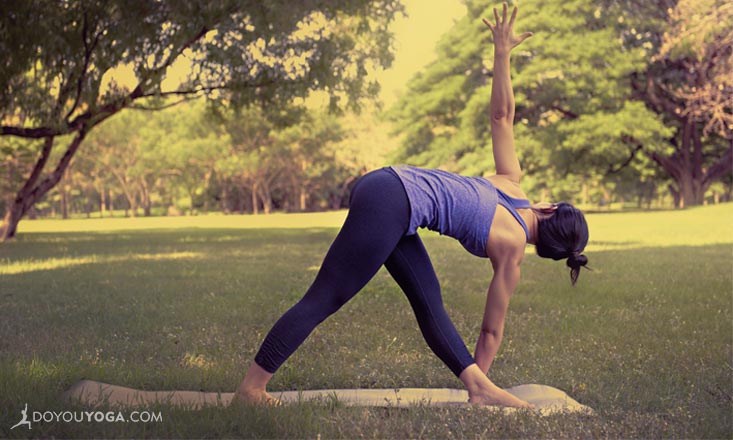I’ve just stepped off the Mysore mat, my first time to practice Ashtanga yoga in about six months.
And man, it felt good.
Not because I was floating through primary postures with any particular elegance or ease, but because by the end, nothing else mattered. All of the things that had been on my mind dissolved. All those things demanding my attention, keeping me awake at night, and challenging me somehow were silenced.
I used to have a six-day-a-week practice, but somewhere in recent months my relationship with it changed. The passion and enthusiasm I once had for it became dampened. I felt disconnected from and disillusioned by the discipline. After all, who doesn’t want to break out of the box once in a while and play around?
Be here now.
But the truth is Ashtanga has taught me to be in the now, and without it I feel like a tiny speck floating on an infinite and often confusing ocean. My practice today reminded me that not everything always has to be solved.
When I began Ashtanga, it felt like an impossible feat to feel comfortable in the primary series postures, let alone complete it. I thought I would never float. Never fly. But every day I got on my mat I let a little bit of ego die.
By tradition, the Ashtanga Vinyasa System is a progressive practice. Originating in Mysore, India it was typically taught one-to-one, teacher to student, where poses were introduced one by one.
Practice and all is coming.
The intelligence of the series means that one asana paves the way for the next. When mastery comes over the preceding posture, another one will be introduced under the guidance of the guru.
In the beginning, remembering all 65 postures was beyond me. It just wasn’t going to happen.
Thankfully, my first teacher opposed cheat sheets, so I committed them to memory just a handful at a time. Each morning when I stood at the top of my Manduka for the opening invocation, my mind would still, go blank, and I would begin.
Begin at the beginning.
All I knew was that Sun Salutation A came first. Without any idea about what came next, I would let my body breath and my limbs move. I let myself relax into the not knowing.
The more I allowed myself to be absorbed in the moment, the more I inhabited my body. The more I owned my breath, the more present I became—and the next posture simply came. My body would intuitively know where to go at just the right moment!
Soon it became second nature to just flow and go with it. Although I was performing the same sequence each day, the experience was always different. I always felt challenged. But through that challenge, I changed.
Ashtanga is full of lessons.
I realised there can be practice, but no pushing. There can be effort, but it needs to be supported by effortless and an equanimous mind. I learned that I couldn’t ‘do’ asana if I was pre-occupied with achieving.
To do it every day, I had to learn when to put in the effort and when to wait it out. We cannot attack it scattergun or run every time we feel challenged, or we’ll quickly become exhausted.
Ashtanga has shown me how to be more open and less goal-oriented. You see, we don’t always need to know where we’re going. All we can do is identify and focus on the next step, rather than what comes three steps from now. It’s such a great life lesson.
If we are committed to the moment, to fully arrive, the rest will simply arise—if we let it.
I’ll be on the Mysore mat again tomorrow.


